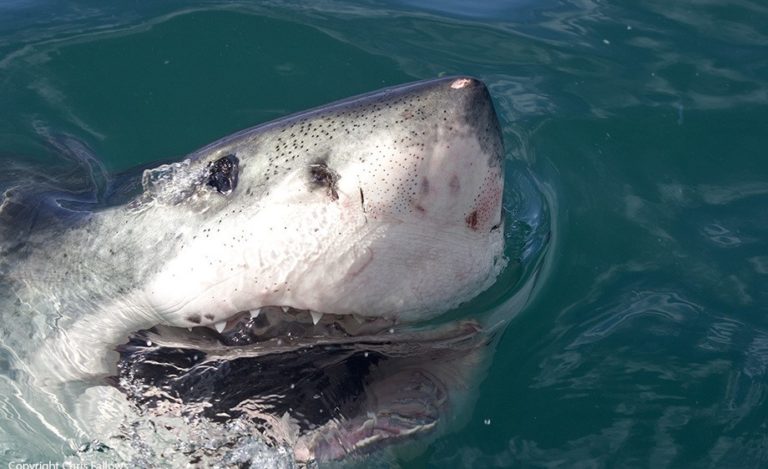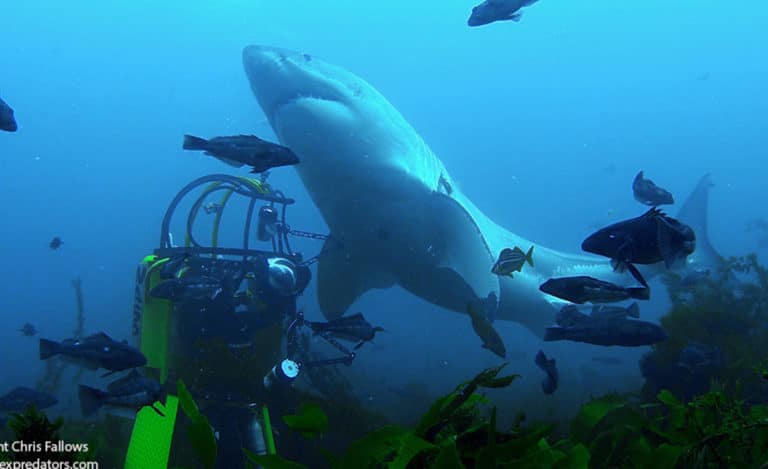Natural Predation has been our staple in terms of what we have speacialised in observing and recording data on for the past 25 years, primarily at Seal Island in False Bay.
During this time we have seen what must surely be some of THE most incredible interactions between cape fur seals and their nemesis, the Great White Shark.
These spectacular events have attracted global attention and the likes of Discovery Channel, The BBC, National Geographic and many other famous networks have been a regular fixture trying to capture these scenes on camera.
In this episode, we discuss the cliffhanger of Air Jaws
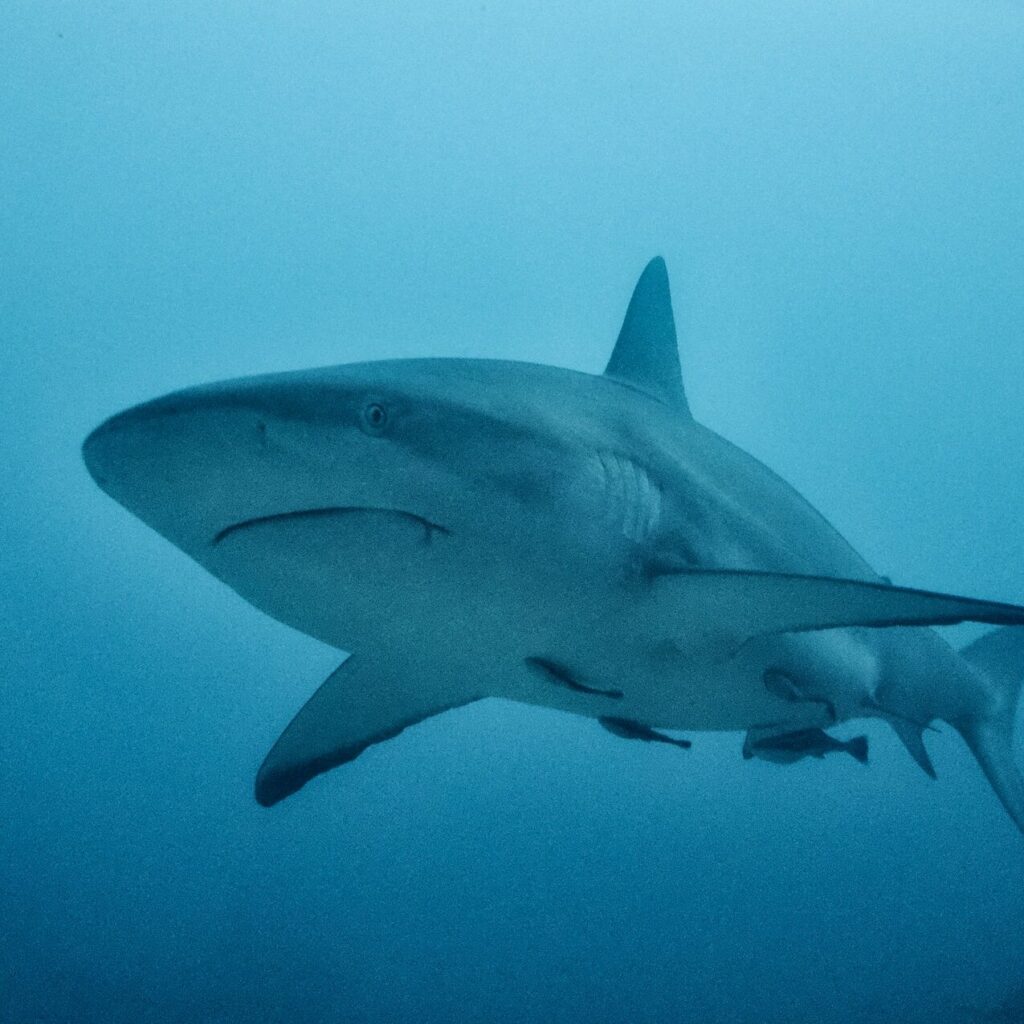
From the nearly 10,500 predatory events we recorded we learnt that the average success of the sharks was very close to 50%, we learnt that they are far more successful when hunting young of the year seals than more mature animals. We learnt that the success rate of the Great white drops to about 15% when they target groups. We also learnt that the sharks use different strategies in relation to certain lunar phases and that environmental conditions such as swell, wind speed and direction and visibility all to a lessor or greater degree effect the outcomes, intensity and volume of predation that we observed.
We found that larger sharks generally hunted further away from the Island with greater levels of success than smaller sharks. These smaller sharks typically hunted more often around the highest density areas of both seals but also other similar sized sharks. This situation seemed too often force suboptimal attacks based on the pressure of “if you don’t have a go, I will” and therefore seemed to result in the sharks triggering when perhaps not at the most optimal time.
Over time we also saw how over the course of each season the young seals would become wiser to the predatory threat posed by the sharks and they themselves adapted by using different anti predatory techniques.
By simple observation, day after day for a quarter of a century we learnt a remarkable amount.
Our project’s one shortcoming was that we could never see what happened underwater prior to an attack, what were the real triggers, and what was it that made a shark go from a state of heightened awareness to all-out attack?
Essentially what we had been doing was reading the final few chapters in the great almanac of how natural predation unfolds between shark and seal.
We saw the spectacular grand finale to the hunt, what we were missing was the preamble.
Plettenberg Bay, South Africa.
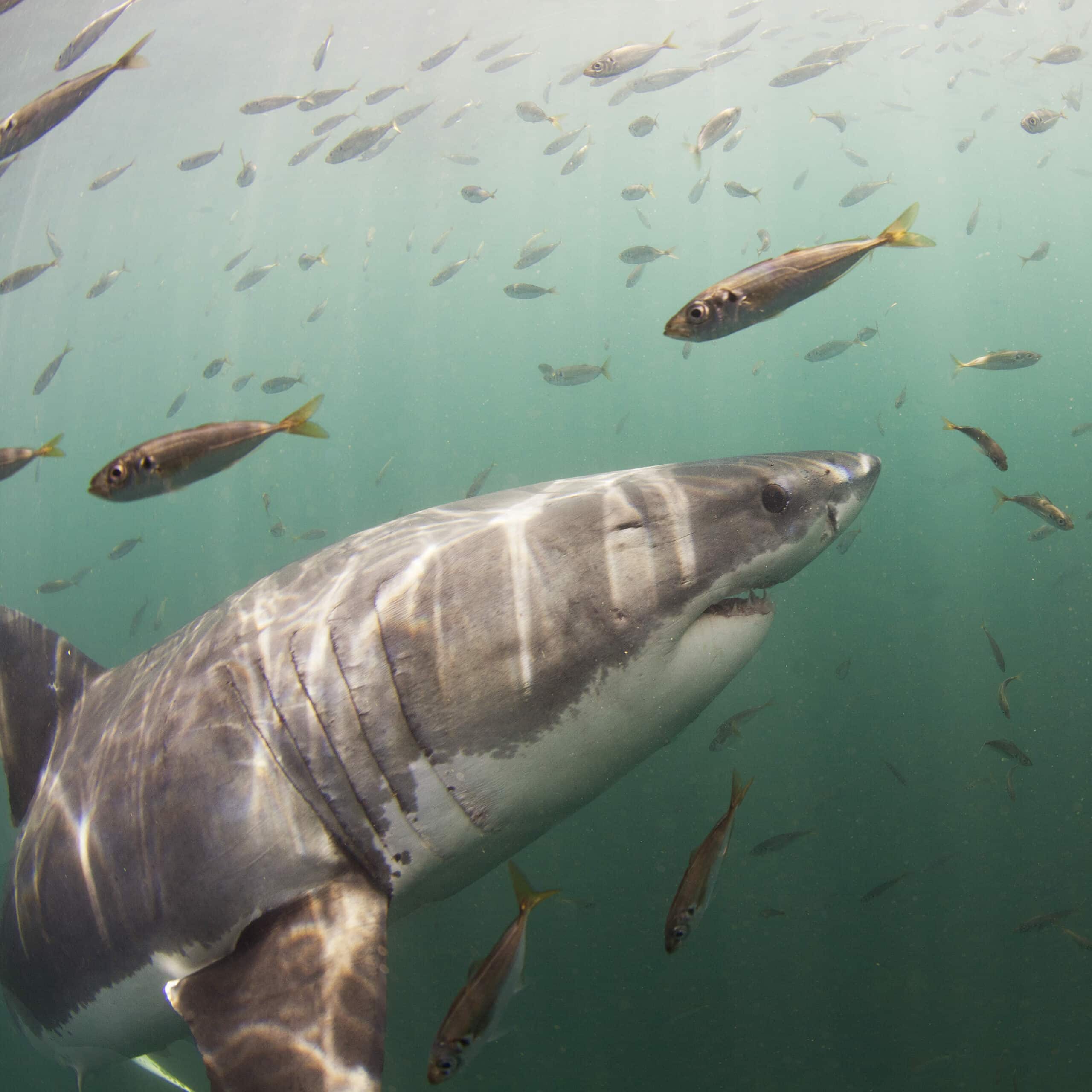
Our premise has always been to do things with as little invasive impact as possible and one of the things we are proud of is that all of our teams 15 scientific papers to date have been based on natural observation, and huge amounts of time in the field simply watching and recording what unfolded in front of us.
We never thought we would get an opportunity to conclusively see what happens before a hunt as to do this would require boats, underwater drones, tagging sharks and other invasive methods that may alter outcomes.
Along came Plettenberg Bay and Robberg Peninsula.
Bruce Noble and other Plettenberg Bay locals have for nearly half a decade been quietly observing shark and seal interactions from Plett’s high cliffs along the Robberg Peninisula.
During this time the local seal population has grown as a general Eastward shift in the seals primary prey of sardines and anchovies has created a need for the seals to adapt accordingly. More seals and less other prey availability for the great white sharks due to factors such as demersal shark longlining have meant more regular sightings of sharks along the Robberg Peninusla as they try their luck in capturing the wily seals who hug the cliffs.
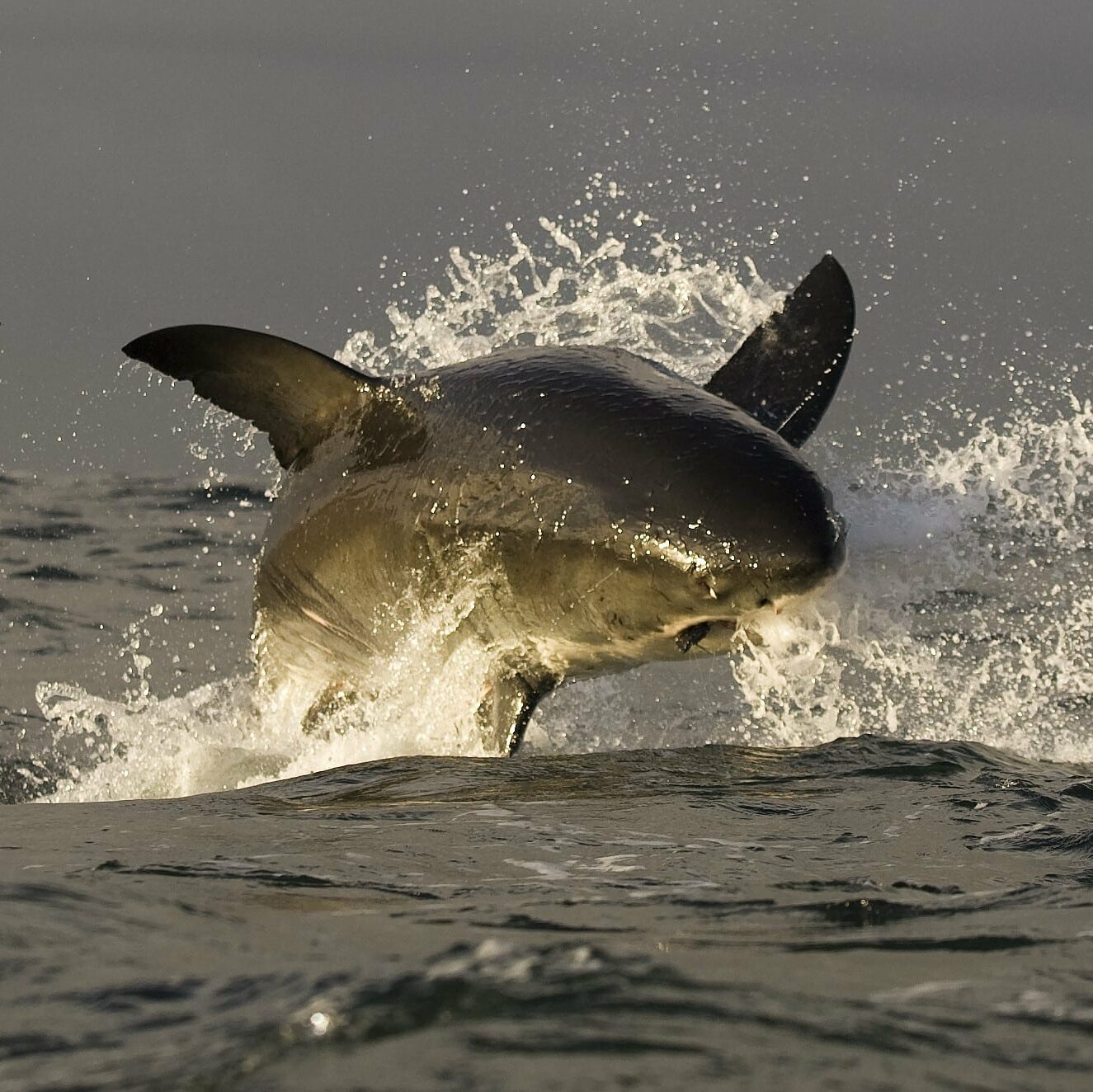
Bruce and others have grown to love these sharks and are in awe of what they have seen. They have a passion for the area and its wildlife and they love the sharks. Essentially they have become the custodians of the area and thank goodness for this.
During this time they have identified a handful of different sharks that they have come to know as individuals who spend protracted periods in the same areas. Whilst we often speculated that each great white shark may have a preferred area to hunt, it has been difficult to conclusively prove.
Over the past 3 seasons we have gone up to Plett and witnessed the interactions first hand ourselves. It is nothing short of incredible! You are essentially a voyeur in the sharks’ world as you watch the interactions play out below you from the lofty heights above.
Together with our longtime friend, colleague and one of the world’s most respected shark scientists, Dr Neil Hammerschlag of The University of Miami we have started a research project looking at the natural predation in the area. We have also joined forces with Mossel Bay’s Dr Enrico Gennari who is studying shark movement and habitat usage in the area.
Our team’s two masters students Lacey Williams and Alex Anstett are based for the entire season on the cliffs and each day record shark & seal behavior, interactions and any predatory behavior.
In a nutshell we are hoping to better understand the complexities of the preamble to predation.
One of our primary aims with the sharks is to find out what the required green lights are for a shark to go from random patrolling, to interested, and finally to all-out attack. And on the flip side we are hoping to better understand what the seals are doing to avoid ending up on the menu.
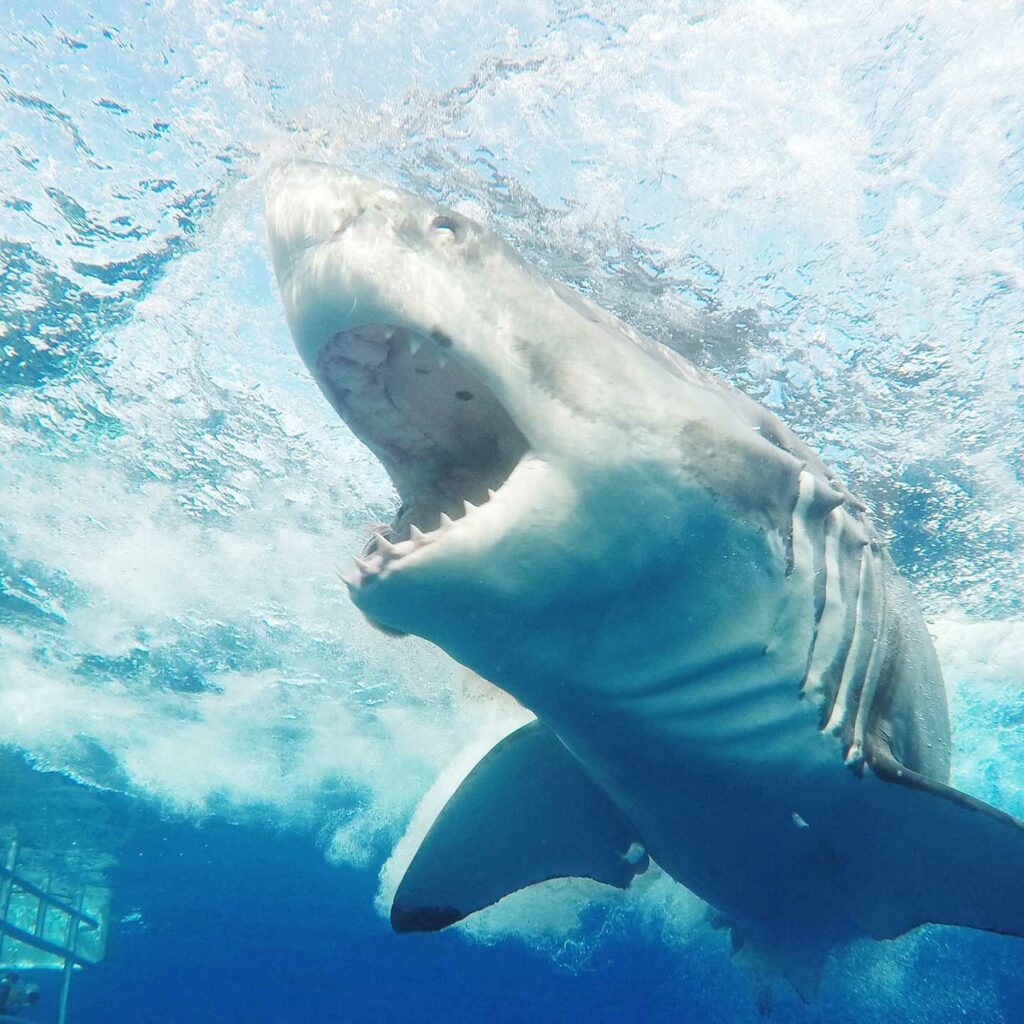
Our permit allows us to fly a drone and what is remarkable is to watch the drone footage we have assimilated.
You can see how the shark’s tail beats at an elevated rate whilst patrolling their preferred sectors.
We have already observed how the shark winds up like an adder about to strike and then as quickly either goes into full out attack or simply uncoils and resumes patrolling if conditions were not quite optimal. By the same token the seals go from cautiously playful to almost addictively interested in the sharks when they see them. The mobbing behavior we are witnessing and learning to better understand is incredible. It appears to be a case of rather know where the devil is than not. Just how long you stay in the devils company is what is particularly fascinating and complex to understand.
To be quite honest it is spellbinding, it is a real Game of Thrones where strategies and life and death battles take place right below you.
We have seen 10 ft sharks hunting in 5 foot of water and we have seen them breach almost onto rocks. The sharks patrol these self-same rocks almost as if a part of a lethal game of hide-and-seek where hunter and hunted are circling on opposite sides of the rocks.
For us it is a chance to finally read the contents page, have the scene set and really get to know what it is that drives both predator and prey to what is the final act in their deadly pax de deux of death that we have come to know so well at Seal Island.
Plettenberg Bay truly is a remarkable natural history location that we really hope gets the proper protection that it needs. We also do great white shark cage diving Cape Town.
Illegal sport fishing for Great Whites still takes place off the cliffs just a few hundred meters away from our observation sites, unbelievably within a Marine Protected Area, and tourist boats still speed through the area posing a significant boat strike threat to the marine wildlife in the area, including the sharks themselves.
If ever there was a chance to create a natural marine tourism hotspot where purely natural predatory behavior can be observed, unaltered by the likes of baiting, chumming and boats, Robberg Peninsula is probably unique in the world for offering such an opportunity.
For our team the opportunity to conduct our research over the next few years and compare it to our data from False Bay’s Seal Island will offer a once in a lifetime opportunity to close the book on natural predation.
The beauty of it all is that we can simply sit, observe and record the events as they unfold below us.
If you enjoyed this blog, you might also like how to choose a shark cage diving destination in South Africa, and top tips on shark photography by Chris Fallows.


